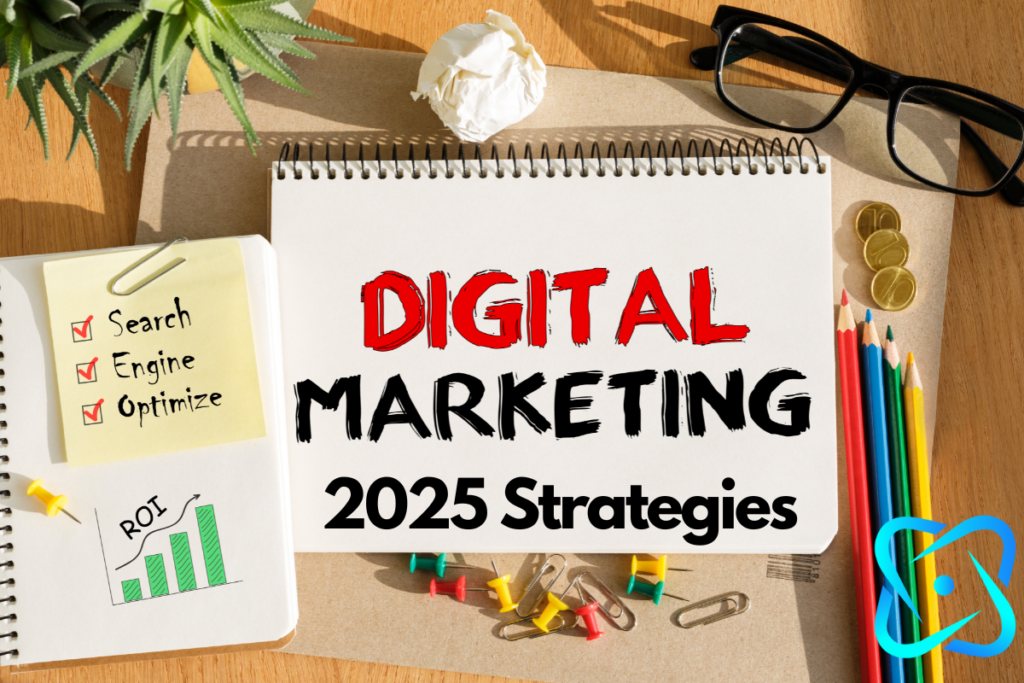On-Page SEO: Essential Practices for Better Rankings

In the ever-evolving landscape of digital marketing, search engine optimization (SEO) remains a cornerstone for achieving online visibility. While off-page strategies like link building are important, on-page SEO is where it all begins. This comprehensive guide will walk you through essential on-page SEO practices to help boost your search engine rankings and enhance your website’s performance.
Understanding On-Page SEO
On-page SEO refers to the optimization strategies applied directly on your website to improve its search engine ranking. This includes optimizing content, HTML source code, and other elements that affect your website’s visibility. According to Backlinko, on-page SEO contributes significantly to how search engines perceive your site, making it a critical component of any SEO strategy.
Essential On-Page SEO Practices
1. Keyword Research and Optimization

Keywords are the foundation of SEO. The first step in optimizing your page is to conduct thorough keyword research. Use tools like Google Keyword Planner or Ahrefs to identify keywords that are relevant, have a high search volume, and low competition.
Once you’ve identified your target keywords, integrate them naturally into your content. Place them in strategic locations such as the title, headers, and throughout the body text. However, avoid keyword stuffing, as it can negatively impact your SEO efforts.
2. Crafting Compelling Title Tags
Title tags serve as the first impression for your page in search engine results. They influence how search engines understand your content and how users perceive your page’s relevance to their query. According to SEO experts at Moz, a well-optimized title tag can be a game-changer for attracting more traffic to your site.
Best Practices for Creating Effective Title Tags
- Keep It Short and Sweet: Aim to keep your title tags under 60 characters. This ensures that they are fully visible in search results without being cut off. A concise title is more likely to capture the attention of users quickly.
- Incorporate Your Primary Keyword: Ensure that your primary keyword is included in the title tag, preferably near the beginning. This helps both search engines and users understand the main topic of your page instantly.
- Make It Compelling: Your title tag should not only be informative but also intriguing. Use action-oriented words or pose a question to spark curiosity and encourage users to click.
- Reflect the Content Accurately: Ensure that your title tag accurately represents the content of the page. Misleading titles may increase your bounce rate as users leave your page upon realizing it doesn’t deliver what was promised.
- Include Your Brand Name: If space permits, adding your brand name can help build brand awareness and trust. It’s especially useful for established brands with a loyal following.
Examples of Effective Title Tags
- “10 Proven Strategies for Boosting Your SEO in 2023”
- “Learn How to Craft the Perfect Title Tag for Better SEO – [Your Brand Name]”
- “The Ultimate Guide to Keyword Research: Tips for Beginners”
The Impact of a Strong Title Tag on CTR
A well-crafted title tag can significantly boost your CTR, leading to more traffic and potentially higher conversion rates. When users see a title that directly addresses their needs or piques their interest, they are more likely to click through to your content.
3. Meta Descriptions that Drive Clicks
Meta descriptions might be the unsung heroes of the SEO world, but they hold a crucial key to driving traffic to your website. Let’s dive into how these brief snippets can make a significant impact on your website’s click-through rate (CTR) and overall user engagement.

Why Meta Descriptions Matter
Imagine browsing through a search engine result page (SERP). Each result is vying for your attention, and right beneath the URL, you spot a short, compelling summary of the page’s content. That’s the meta description at work. While these descriptions don’t directly influence your search rankings, they do play a pivotal role in enticing users to click on your link over others.
Crafting the Perfect Meta Description
So, how do you create meta descriptions that not only inform but also attract clicks? Here are some tips to keep in mind:
- Keep It Concise and Clear: Aim for a length of around 155-160 characters. This ensures that your entire message is visible on most devices without being cut off. Think of it as your elevator pitch—short and to the point.
- Include a Strong Call-to-Action (CTA): Encourage users to take action by incorporating phrases like “Learn more,” “Discover,” “Find out,” or “Get started.” A well-placed CTA can be the nudge users need to click on your link.
- Incorporate Target Keywords Naturally: Keywords are still king in SEO, and your meta description is no exception. Seamlessly weave your target keywords into the text to align with user search intent, without making it sound forced or spammy.
- Reflect Your Content Accurately: Ensure your meta description accurately reflects the content on your page. Misleading descriptions can lead to high bounce rates and disgruntled users.
- Engage and Entice: Use persuasive language and highlight unique selling points. What makes your page stand out from the rest? Capture that essence in your description.
The Impact of a Well-Written Meta Description
A well-crafted meta description can significantly enhance your CTR, which indirectly influences your search engine rankings. Higher CTRs signal to search engines that your page is relevant and valuable, potentially leading to improved visibility over time.
4. Optimizing Header Tags
Header tags (H1, H2, H3, etc.) are crucial for both SEO and user experience. They help organize your content, making it easier for readers to navigate and for search engines to understand your page’s structure. Use your primary keyword in your H1 tag, and break down your content with H2 and H3 tags to maintain a logical flow.
5. High-Quality, Engaging Content
Content is king in the world of SEO. Search engines prioritize high-quality, relevant, and engaging content. According to a study by HubSpot, websites that publish consistent, quality content receive 3.5 times more traffic than those that don’t. Focus on providing value to your readers by addressing their pain points, answering their questions, and incorporating multimedia elements like images and videos.

6. Image Optimization
Images enhance the user experience but can also slow down your website if not optimized correctly. Use descriptive filenames and alt tags for your images, incorporating keywords where appropriate. Additionally, compress images to reduce load times and improve your page’s performance.
7. Internal Linking
Internal linking is an effective way to guide users and search engines through your website. Let’s dive deeper into why internal linking is crucial and how you can harness its full potential.
Why is Internal Linking Important?
- Distributes Page Authority:
Internal linking helps distribute the authority of your web pages. When you link from a high-authority page to another page, it passes some of its SEO value, or “link juice,” to the linked page. This can significantly boost the visibility and ranking potential of your content across search engines. - Enhances User Engagement:
By providing users with additional relevant content through internal links, you encourage them to explore more pages on your site. This not only increases the time they spend on your website but also reduces bounce rates, signaling to search engines that your content is valuable and engaging. - Improves Site Navigation:
Well-structured internal links create a cohesive and intuitive navigation path for users. It allows visitors to easily find related information, improving their overall experience. A seamless navigation system is crucial for both user satisfaction and search engine crawling.
Best Practices for Internal Linking
- Contextual Relevance:
Ensure that your internal links are relevant to the content they are placed within. Linking related pages provides more value to readers and makes the connections between content more natural and logical. - Keyword-Rich Anchor Text:
Use descriptive, keyword-rich anchor text for your internal links. This not only provides context for users but also helps search engines understand what the linked page is about. Avoid using generic terms like “click here” or “read more.” - Link to Deep Content:
Instead of always linking to your homepage or top-level pages, focus on linking to deeper, more specific content. This strategy helps search engines discover and index those pages more efficiently, potentially improving their visibility in search results. - Balance Your Links:
Avoid overloading a page with too many internal links, as this can confuse readers and dilute the effectiveness of each link. Aim for a natural balance that enhances the user experience without overwhelming them. - Regularly Update Links:
As your website grows, regularly review and update your internal links to ensure they remain relevant and functional. This maintenance helps prevent broken links and ensures that your site structure evolves alongside your content.
8. Mobile-Friendliness
With mobile devices accounting for over 50% of global web traffic, ensuring your website is mobile-friendly is crucial. Google prioritizes mobile-friendly sites in its rankings, so implement responsive design techniques to ensure your site performs well on all devices.
9. Page Speed Optimization
Page speed is a critical ranking factor. Slow-loading pages can lead to high bounce rates and lower rankings. Use tools like Google PageSpeed Insights to analyze your site speed and identify areas for improvement. Optimize your page speed by minimizing HTTP requests, enabling browser caching, and compressing files.

10. URL Structure
One of the often-overlooked aspects of SEO is your URL structure. While it might seem like a minor detail, a well-crafted URL can significantly enhance your site’s visibility and user experience. Here are some best practices for crafting effective URLs.
1. Keep It Simple and Descriptive
A concise URL is easier to read and remember. Aim to make your URLs as straightforward as possible while still conveying the essence of your content. For example, instead of using a complex string of numbers and letters, opt for something like /blog/healthy-recipes for a page containing healthy recipes.
2. Incorporate Relevant Keywords
Keywords are the backbone of SEO, and your URL is no exception. By including relevant keywords in your URL, you signal to search engines what your content is about. However, it’s crucial to avoid keyword stuffing, which can lead to penalties. Use keywords naturally and sparingly.
3. Use Hyphens to Improve Readability
Separating words with hyphens is a simple yet effective way to enhance the readability of your URLs. Unlike underscores (_), hyphens (-) are recognized by search engines as word separators, making it easier for them to parse your URL accurately. For example, use mywebsite.com/best-seo-tips rather than mywebsite.com/best_seo_tips.
4. Avoid Dynamic Parameters
Whenever possible, avoid using dynamic parameters in your URLs, such as ?id=123. These can be difficult for users to understand and for search engines to index. Static URLs are preferable as they are cleaner and more descriptive, making them more user-friendly.
5. Keep It Lowercase
Using lowercase letters in your URL is a simple way to avoid potential issues with duplicate content. URLs are case-sensitive, and using uppercase letters can lead to different URLs being treated as separate pages, which can dilute your SEO efforts.
Conclusion: The Power of On-Page SEO

On-page SEO is an indispensable part of any comprehensive SEO strategy. By implementing these essential practices, you can enhance your website’s visibility, improve user experience, and ultimately achieve better search engine rankings. Remember, SEO is not a one-time task but an ongoing process that requires regular updates and optimization.
Start with these on-page SEO techniques and continuously monitor your site’s performance. With dedication and consistency, you’ll see improved rankings and increased organic traffic over time.



